In the kaleidoscope of luxurious textiles, one fabric stands out for its timeless elegance and cultural allure - Cashmere. Hailing from the majestic Himalayan region, Cashmere has woven its way into the fabric of tradition. Further, its threads echo the tales of craftsmanship and heritage. Beyond its reputation as a coveted accessory, Cashmere carries with it an air of mystique. It is indeed an artisanal enigma that captivates those who seek to understand the science behind its exceptional qualities.
Cashmere, derived from the wool of the Changthangi or Himalayan goat, transcends its material existence. This fibre, renowned for its unparalleled softness and fineness, has been draped over shoulders in celebration, woven into narratives of love, and passed down through generations as a symbol of prestige. So, in this exploration, we embark on a journey to unravel the scientific intricacies that transform humble wool into the ethereal fabric known as Cashmere.
Composition, Preparation and Significance
As we delve into the molecular composition and structural nuances of Cashmere, we aim to demystify its distinction from other fine wools. Further, we clarify the distinctions that elevate it to a realm of exclusivity. Beyond the looms and spinning wheels, we will uncover the environmental factors that bestow upon Cashmere its exceptional attributes. Indeed, it is these qualities of Cashmere that flourish in the harsh landscapes that cradle the Himalayan goat.
But Cashmere is more than just a luxurious fibre. It is a living testament to sustainable practices, a canvas upon which the delicate dance of craftsmanship and tradition unfolds. From the hands of skilled artisans to the modern fashion runways, Cashmere continues to rule. It weaves itself into the fabric of contemporary style, adapting to changing times while retaining its core essence.
So, let's unravel the threads of curiosity. Moreover, let's explore the intricate science that transforms raw wool into a fabric that has transcended borders, resonating with cultures worldwide. Join us on this voyage, where the science of Cashmere unfolds. Let's reveal the secrets woven into every fibre of this exquisite textile.
The Origin of Cashmere
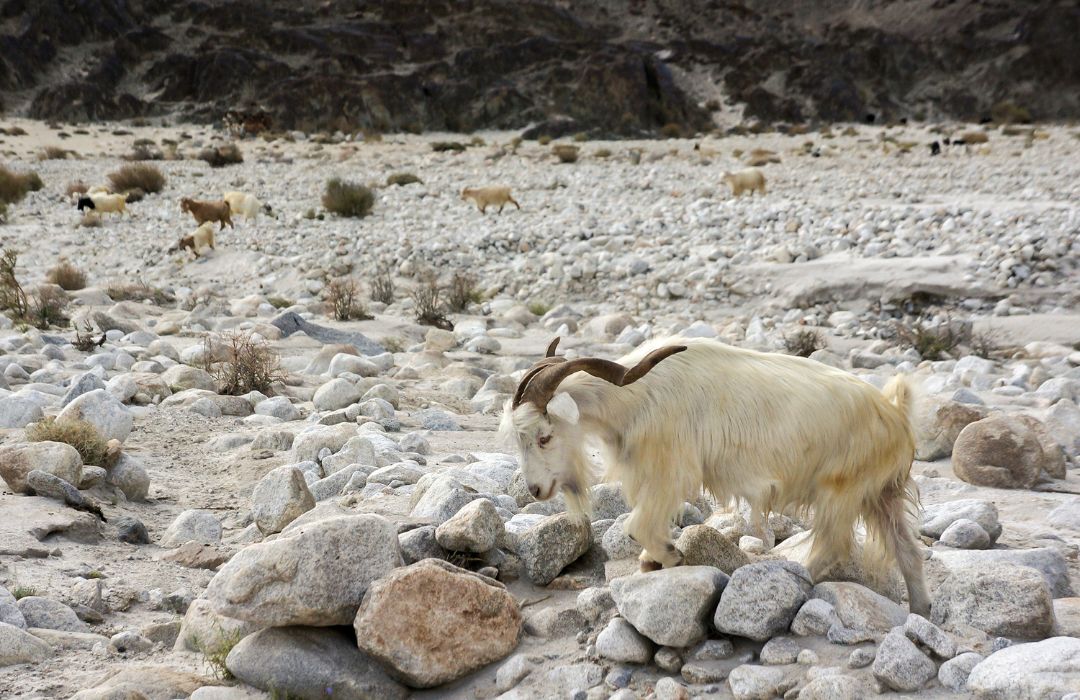
In the mystical realms of the Himalayas, jagged peaks kiss the sky and serene valleys cradle ancient secrets. It is this region where the story of Cashmere begins. At its heart lies the Changthangi, a resilient goat whose wool has become synonymous with luxury. Nestled in the high-altitude plateaus of Ladakh, the Changthangi goat thrives in conditions that would challenge the hardiest of beings.
The Cashmere/Himalayan goat's journey to producing the coveted wool starts with its adaptation to the harsh climate of the Himalayas. These goats endure freezing temperatures, high altitudes, and sparse vegetation, hence forging a robust constitution that reflects in the quality of their wool. As nature's ultimate survivalists, Changthangi goats have evolved over centuries to grow a dense, fine undercoat. This soft, warm undercoat protects them from the biting cold.
It is this undercoat, often referred to as pashm, that forms the crux of Cashmere wool. To shield themselves from the extreme weather, the goats naturally produce a soft, downy layer beneath their coarse outer fur. This precious layer, harvested once a year during the spring moulting season, is the essence of Cashmere. The laborious process of collecting this fine underfur from each goat forms the foundation of Cashmere's exclusivity.
Exclusive Cashmere
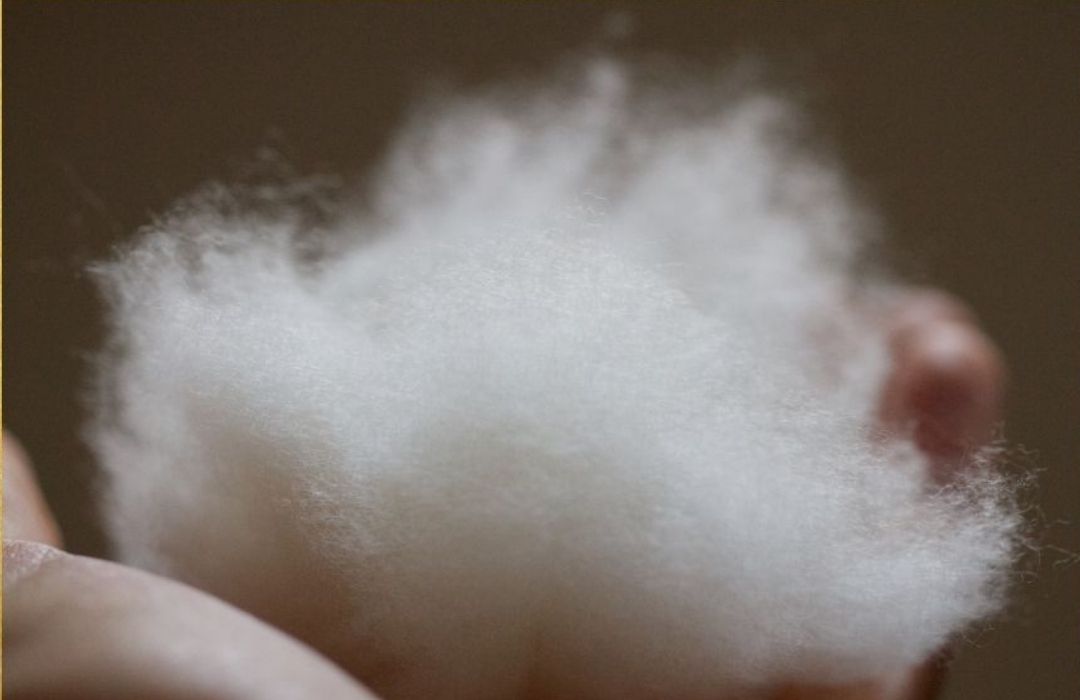
The harsh geography of the Himalayas, with its low temperatures and high altitudes, triggers a biological response in the Changthangi goat. The need for warmth prompts the growth of ultra-fine fibres, measuring only about 12-15 microns in diameter. This incredible fineness is a key factor in the exceptional softness of Cashmere wool. To put it into perspective, human hair typically ranges from 40 to 120 microns. Hence this makes Cashmere fibers finer than the finest human hair.
The environmental conditions, coupled with the goat's unique genetic makeup, contribute to the extraordinary qualities of Cashmere. As artisans have known for generations, it is this combination of nature and nurture that distinguishes Cashmere from other varieties. As we journey deeper into the science of Cashmere, we unravel not just the threads but the intricate relationship between the Changthangi goat, the Himalayan landscape, and the fabric that has adorned royalty and captivated hearts for centuries.
Fibre Structure and Characteristics
The allure of Cashmere lies not only in its cultural richness but also in the intricate details of its fibre structure. To truly understand the science behind this luxurious wool, we must unravel the mysteries of its composition.
Cashmere fibres are characterized by their extraordinary fineness, a result of the Changthangi goat's adaptation to the challenging Himalayan environment. The diameter of these fibres is astonishingly small, ranging between 12 to 15 microns. This places Cashmere at the top tier of fine fibres, with diameters far finer than even the most delicate human hair.
The structure of Cashmere fibres contributes significantly to their softness and insulation properties. The outer protective layer, known as guard hair, is coarse and straight, providing a shield against harsh weather. Beneath this protective layer lies the treasure - the fine, downy undercoat that forms the essence of Cashmere. It is this undercoat that is harvested and transformed into the luxurious fabric we know.
The arrangement of fibres in the undercoat is crucial to the unique qualities of Cashmere. Unlike the parallel alignment found in coarser wools, Cashmere fibres have a crimped structure. This crimping gives the fibres a natural elasticity and suppleness, contributing to the fabric's incredible softness and drape. When woven into a shawl or garment, Cashmere's crimped fibres create a fabric that moulds itself to the body, providing warmth without the weight often associated with other materials.
Cashmere - A Warm Sheen
Cashmere fibres possess a natural sheen, adding a touch of lustre to the fabric. This subtle sheen is a result of the microscopic scales covering the surface of the fibres. These scales reflect light, creating a gentle shimmer that enhances the aesthetic appeal of Cashmere.
Beyond their luxurious feel, the fine and crimped nature of Cashmere fibres imparts excellent insulating properties. Despite its lightweight quality, Cashmere provides exceptional warmth, making it ideal for the cold climates of the Himalayas. This insulation is achieved by trapping air within the crimped structure of the fibres, forming a natural barrier against the chill.
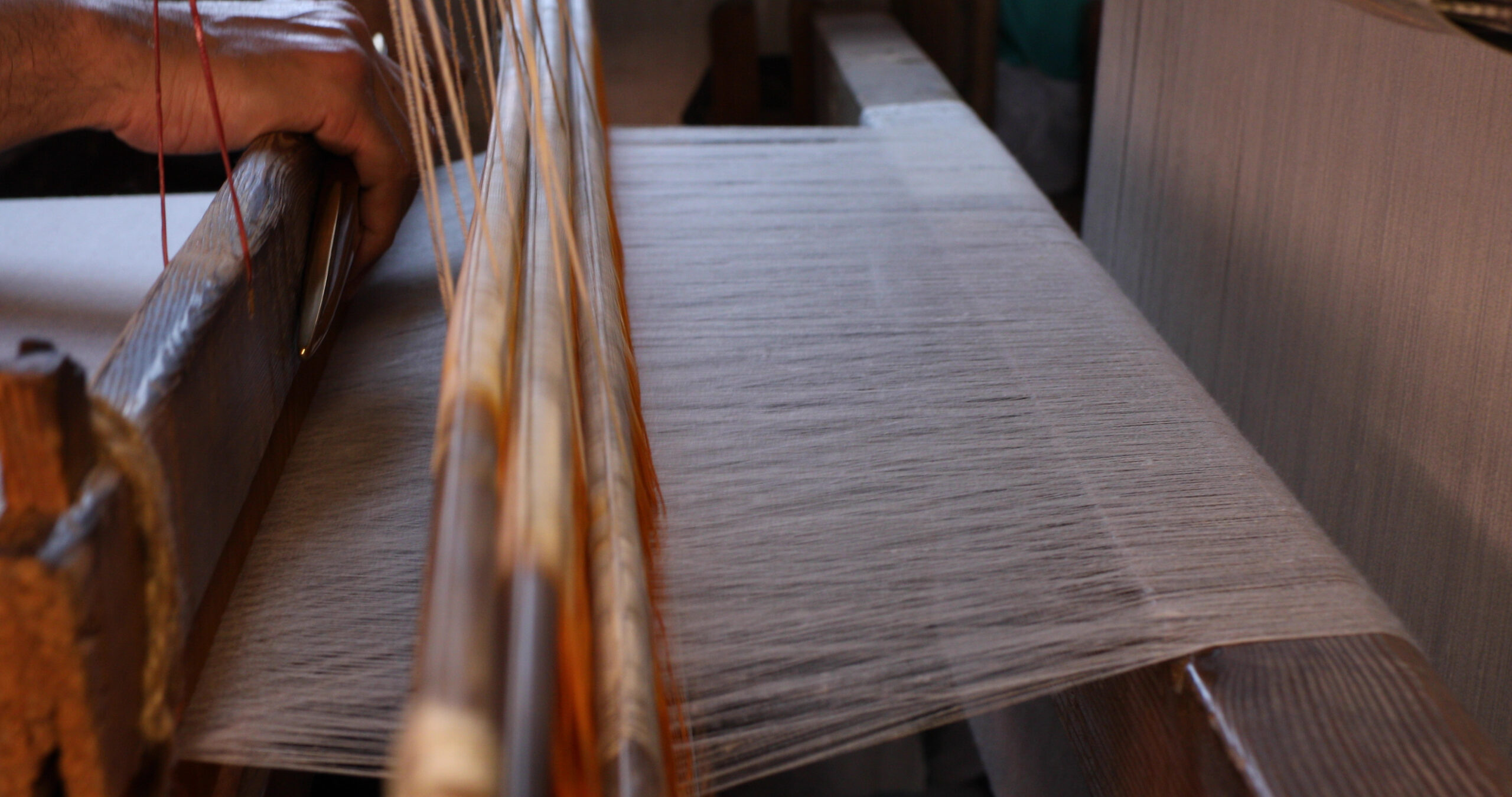
In summary, the science of Cashmere is woven into the very fabric of its fibres. The fineness, crimped structure, and natural sheen combine to create a luxurious material that is not only soft and warm but also visually exquisite. As we wrap ourselves in the elegance of a Cashmere shawl, we are enveloped in a symphony of scientific marvels, a testament to the harmonious collaboration between nature and craftsmanship.
Cashmere vs Pashmina - The Difference
In the realm of luxurious fabrics, people often use the terms "Pashmina" and "Cashmere" interchangeably, leading to a degree of confusion. However, it's crucial to clarify that these terms refer to different aspects of the same exquisite material.
Cashmere, at its core, is a type of wool that comes from the soft undercoat of Cashmere or Pashmina goats. This fine, downy undercoat is famous for its exceptional softness and warmth, making it a sought-after material for high-quality textiles.
On the other hand, Pashmina is not a different material but rather a specific craft and style associated with cashmere wool. Pashmina refers to the art of hand-spinning and hand-weaving Cashmere fibres into delicate and luxurious shawls, scarves, and accessories. The term "Pashmina" originates from the Persian word "pashm," which means wool. Pashmina represents the pinnacle of craftsmanship, with artisans employing traditional methods to create intricate and finely woven textiles.
To clarify, Cashmere is the raw material that comes from the Cashmere goat. On the other hand, Pashmina is the refined product that artisans craft from this material. The best utilization of Cashmere often manifests in the form of a Pashmina shawl. These shawls, woven with precision and care, are renowned for their unparalleled softness, warmth, and timeless elegance.
When we speak of a Pashmina shawl, we are referring to a product that goes beyond the raw material. It encapsulates the artistry, skill, and tradition involved in transforming Cashmere wool into a luxurious accessory. Pashmina shawls, with their intricate weaves and delicate patterns, represent the epitome of craftsmanship and are coveted for their beauty and exceptional quality. Hence, in essence, while Cashmere denotes the origin of the wool, Pashmina embodies the craftsmanship and artistry applied to create exquisite pieces from this luxurious material.
Transforming Cashmere to Pashmina Shawls
The production process of crafting a Pashmina shawl is a meticulous journey that transforms raw Cashmere wool into a masterpiece of warmth and elegance. Each step in this intricate process contributes to the luxurious feel and exceptional quality that define Cashmere.
Collection of Cashmere Wool
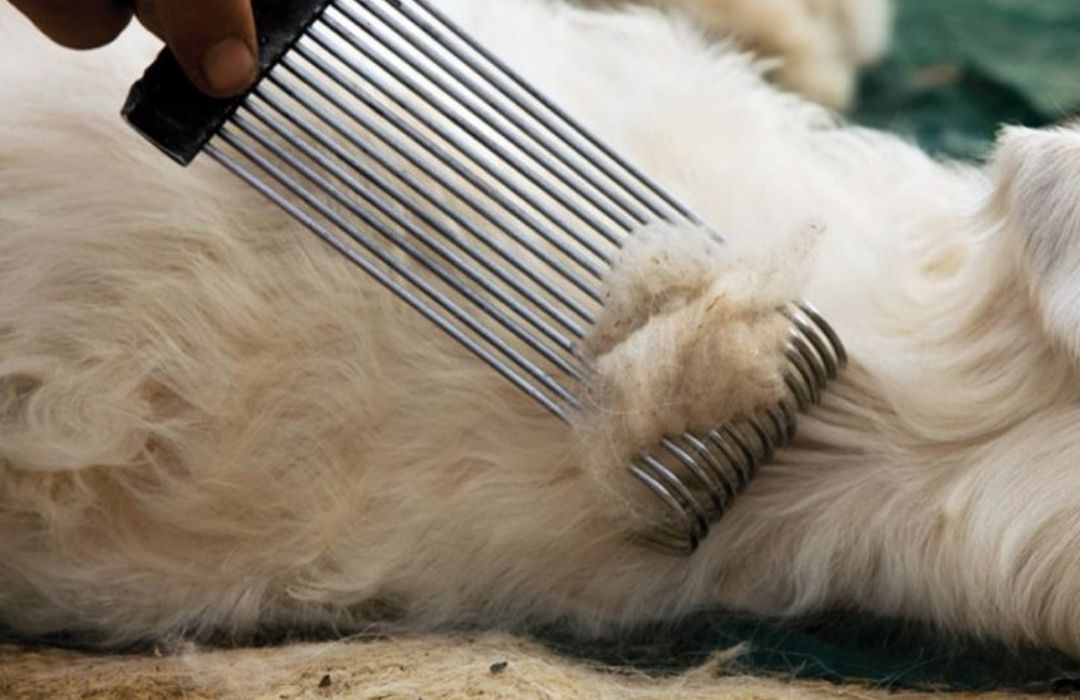
The journey begins with the collection of Cashmere wool from the underbelly of the Changthangi goat, a breed native to the high altitudes of the Himalayan region. The goats produce a fine, downy undercoat during the winter months. Later, these herders carefully gather it to ensure the highest quality fibres.
Cleaning and Sorting
The collected wool undergoes a thorough cleaning process to remove impurities such as dirt and grease. Skilled artisans meticulously sort the fibres, ensuring that only the finest and softest strands go to the next stages of production.
Spinning the Fibre
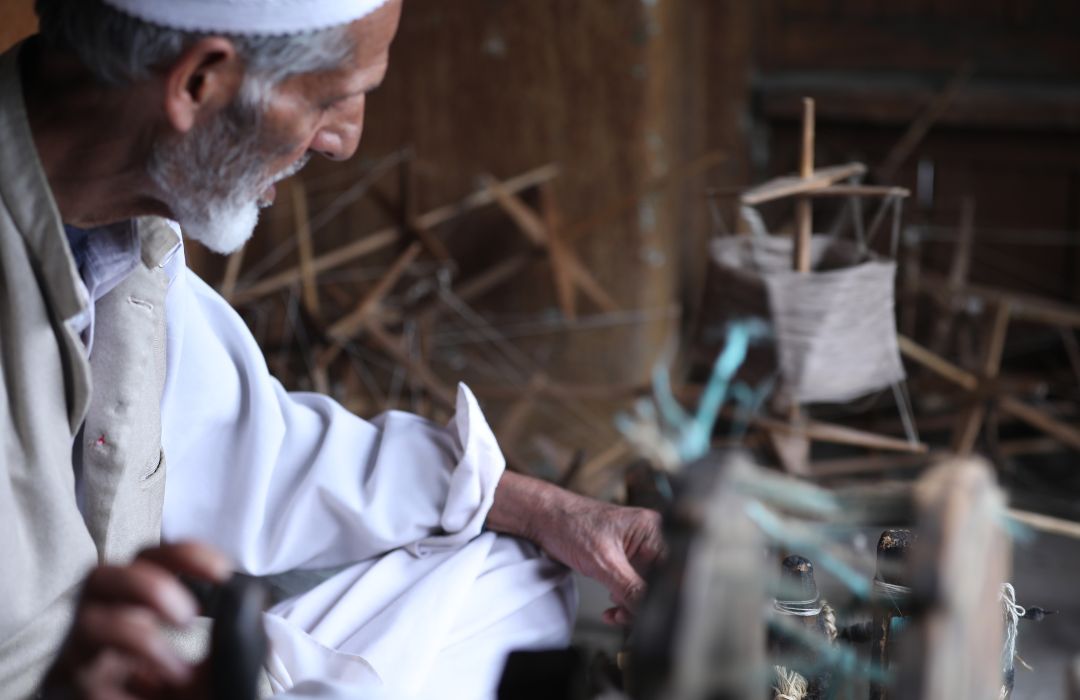
Spinning is a crucial step where artisans transform the clean and sorted fibres into yarn. Traditionally, this process is manual, with skilled artisans using a spinning wheel to create delicate threads. Hand-spinning allows for better control over the fineness of the yarn, contributing to the luxurious feel of the final product.
Weaving Cashmere
Weavers then weave the spun yarn into fabric using traditional hand looms. The weaving process requires precision and expertise, as the artisans carefully create intricate patterns and designs. The handloom allows for greater flexibility, enabling the creation of delicate and finely woven textiles.
Dyeing the shawl
Once the fabric is woven, it undergoes the dyeing process. Pashmina shawls are famous for their rich and vibrant colours, achieved through natural or synthetic dyes. Artisans often use traditional dyeing techniques, adding to the uniqueness of each piece. The careful selection of colours enhances the beauty and visual appeal of the final product.
Finishing Touches
The final step involves adding finishing touches to the Pashmina shawl. This includes processes such as blocking, stretching, and adding fringes or other embellishments. These details contribute to the overall aesthetics and ensure that each shawl meets the highest standards of quality and craftsmanship.
Throughout this production process, skilled artisans play a pivotal role. Their expertise, honed over generations, allows them to create Pashmina shawls that are not just accessories but works of art. The combination of traditional techniques and a deep understanding of the unique properties of Cashmere wool results in a final product that is celebrated for its softness, warmth, and timeless elegance.
Insulation Properties of Cashmere
Cashmere, renowned for its exceptional softness and warmth, boasts remarkable insulation properties that set it apart as a premium fibre. The secret to its ability to provide unparalleled warmth lies in the unique characteristics of the Cashmere wool.
Fineness of Fibres
The fibres of Cashmere are incredibly fine, measuring in microns. The finer the fibre, the more densely it can be packed into a given space, creating a fabric that traps and retains heat efficiently. This fineness contributes to the lightweight nature of Cashmere garments, allowing for optimal warmth without added bulk.
Air Trapping Capability
Cashmere fibres have a natural ability to trap air within their structure. Air is an excellent insulator, and the tiny air pockets created within the fabric act as a buffer against the external cold. This trapped air serves as a protective layer, preventing the escape of body heat and shielding the wearer from chilly temperatures.
Thermal Regulation
Cashmere wool is known for its exceptional thermal regulation properties. It can adapt to the body's temperature, providing warmth in cold climates and remaining breathable in milder conditions. This adaptability makes Cashmere an ideal choice for diverse weather conditions, ensuring comfort and cosiness throughout the seasons.
Natural Fibre Benefits
Being a natural fibre, Cashmere possesses inherent advantages over synthetic materials. Unlike many synthetic fabrics that may retain moisture, Cashmere allows for effective moisture wicking, keeping the wearer dry and comfortable. This natural breathability contributes to the overall insulation efficiency of Cashmere.
Versatility in Layering
Cashmere's thin and lightweight composition doesn't compromise its insulating capabilities. This versatility allows individuals to layer Cashmere garments comfortably, providing customizable warmth according to specific needs. Whether draped as a shawl or worn as a scarf, the adaptability of Cashmere makes it a practical choice for various styling options in colder climates.
Why choose Cashmere over other Wool?
While the primary allure of Cashmere lies in its luxurious feel and aesthetic appeal, there are potential health benefits associated with this exquisite fibre. Scientific studies and anecdotal evidence suggest that wearing Cashmere can positively impact aspects of skin sensitivity, allergies, and overall well-being.
Hypoallergenic Properties
Cashmere, derived from the wool of the Changthangi goat, is a natural fibre known for its hypoallergenic properties. Unlike synthetic materials or some other types of wool, Cashmere is less likely to cause allergic reactions. This makes it a suitable choice for individuals with sensitive skin or those prone to allergies, providing a gentle and comfortable option for daily wear.
Breathability and Skin Comfort
Cashmere's breathability is a notable feature that contributes to skin comfort. The natural fibres allow air circulation, preventing the trapping of moisture next to the skin. This breathability can be particularly beneficial for those with skin conditions, as it reduces the risk of irritation and promotes a more comfortable wearing experience.
Sensory Benefits
The softness of Cashmere against the skin can have positive sensory effects. The tactile pleasure of wearing a Cashmere scarf or shawl can evoke feelings of comfort and relaxation, potentially contributing to stress reduction. Many people find the touch of this luxurious fabric soothing, making it a comforting accessory in various situations.
Temperature Regulation
Cashmere's ability to regulate temperature can indirectly benefit health. The fabric adapts to the body's temperature, providing warmth in cooler conditions and remaining cool in warmer settings. This adaptability can prevent discomfort caused by overheating or excessive cold, supporting overall comfort and well-being.
Natural and Chemical-Free
As a natural fibre, Cashmere is often produced without the use of harsh chemicals or synthetic additives. This aspect is hence beneficial for individuals who prioritize natural, chemical-free products in their lifestyle. The absence of certain chemicals can reduce the risk of skin irritation and align with preferences for eco-friendly and sustainable choices.
While these potential health benefits are noteworthy, individual responses may vary. It's essential to consider personal sensitivities and preferences when choosing fabrics. Incorporating Cashmere into your wardrobe not only adds a touch of luxury but may also contribute to a comfortable and health-conscious lifestyle.
Sustainability and Environmental Impact
The production of Cashmere is inherently linked to traditional and eco-friendly practices, contributing to its reputation as a sustainable and environmentally conscious luxury fibre. The sustainability of Cashmere has deep roots in the traditional methods employed throughout its production process.
Ethical Sourcing and Animal Welfare
Cashmere wool comes from the Changthangi goat, which predominantly resides in the Himalayan region. The traditional herding practices ensure the well-being of these goats. Unlike some industrial farming practices, the herding of Changthangi goats is often characterized by a symbiotic relationship between the herders and the animals. This emphasizes ethical sourcing and animal welfare.
Natural Fibre and Biodegradability
Cashmere is a natural fibre and comes from the fine hairs of the Changthangi goat's underbelly. Being a natural material, Cashmere is biodegradable. Hence, it can decompose naturally without leaving harmful residues. This contrasts with synthetic materials which contribute to environmental pollution and persist in landfills for extended periods.
Traditional Craftsmanship

The craftsmanship involved in transforming raw Cashmere wool into finished products is a labour-intensive process, often carried out by skilled artisans using traditional methods. Hand-spinning, hand-weaving, and hand-embroidery are common practices that not only contribute to the uniqueness of each piece but also minimize the carbon footprint associated with automated and mass production.
Low Environmental Impact
The traditional methods employed in Cashmere production generally have a lower environmental impact compared to more industrialized processes. The use of natural dyes, derived from plants and minerals, reduces the reliance on synthetic chemicals that can harm the environment. Additionally, the absence of heavy machinery in traditional craftsmanship minimizes energy consumption and pollution.
Longevity and Timelessness
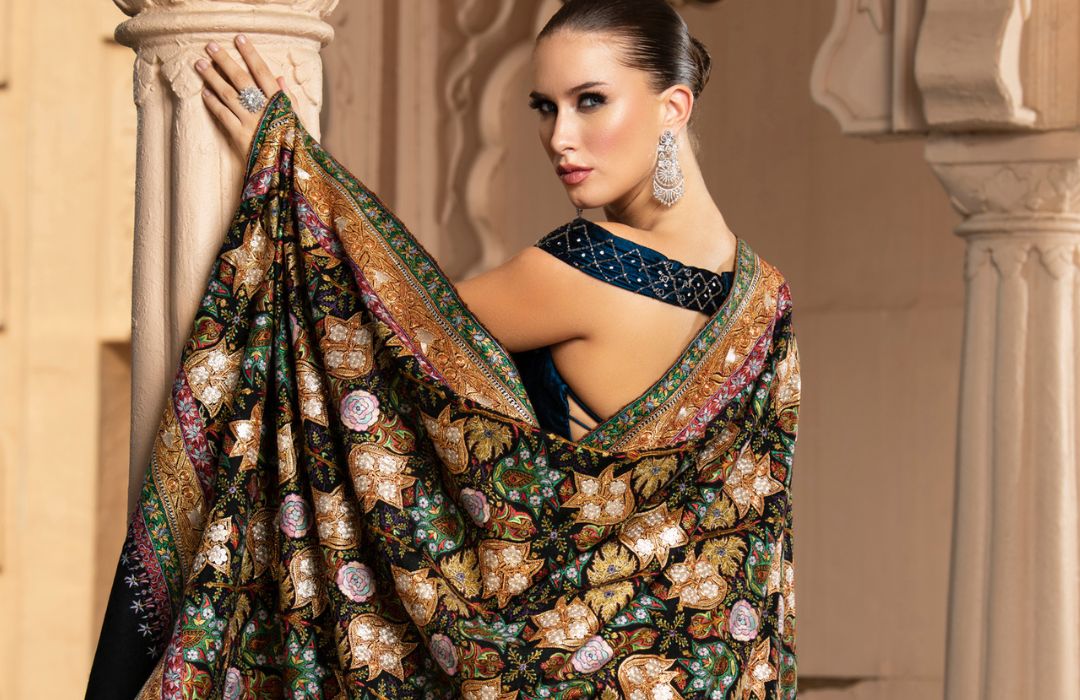
Cashmere's durability and timeless appeal contribute to sustainability by promoting longevity in fashion. Unlike fast fashion trends that lead to frequent disposal of clothing items, Cashmere shawls and scarves are enduring pieces that withstand changing fashion cycles. Investing in a high-quality Cashmere item encourages a more sustainable approach to wardrobe choices.
While Cashmere production aligns with many sustainable practices, challenges persist. Yet, continuous efforts are needed to address environmental concerns associated with any industry. By supporting ethical sourcing, traditional craftsmanship, and natural fibres, consumers can contribute to the sustainable legacy of Cashmere as well as make mindful choices in their fashion consumption.
Also read: CASHMERE: A SUSTAINABLE AND ETHICAL ALTERNATIVE
Cashmere in Modern Fashion
In the ever-evolving landscape of fashion, the scientific understanding of Cashmere has played a pivotal role in its continued relevance and adaptation to modern trends. Beyond its traditional roots, Cashmere has seamlessly integrated into contemporary fashion through various innovations and its inherent adaptability.
Technological Innovations
Advancements in textile technology have enabled the production of Cashmere fabrics with enhanced properties. Scientific research has contributed to refining the spinning and weaving processes, resulting in fabrics that are not only softer but also more resilient. These innovations have indeed broadened the scope of Cashmere's application in various clothing items, from shawls and scarves to garments like sweaters and dresses.
Adaptability to Contemporary Styles
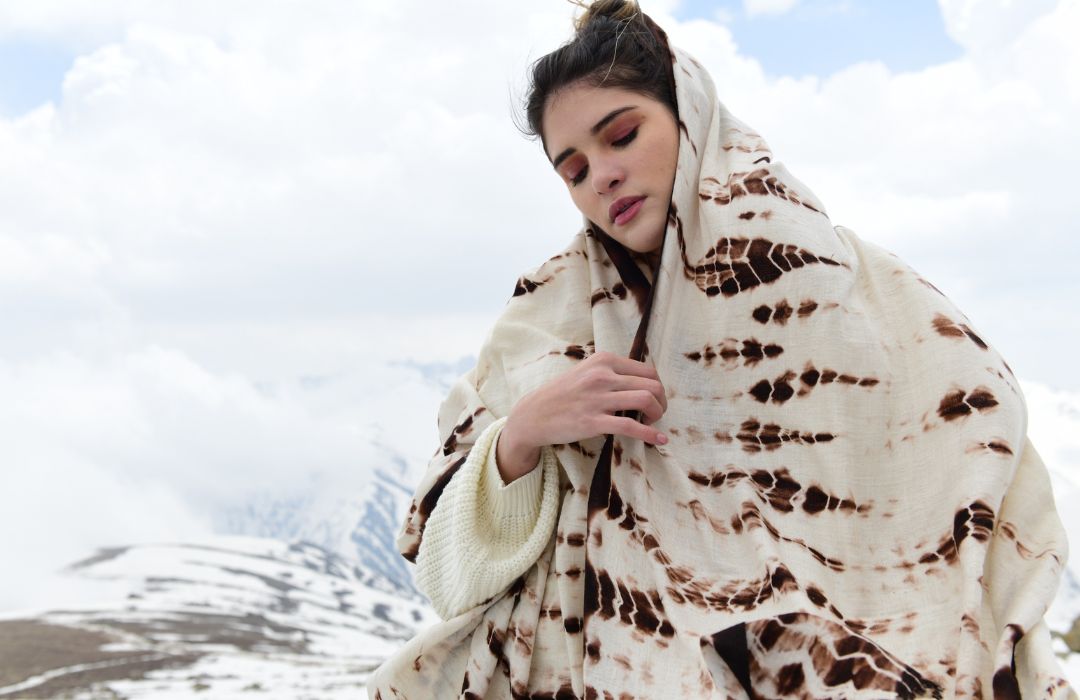
The inherent adaptability of Cashmere to various styles and aesthetics has indeed been a driving force behind its continued presence in modern fashion. Designers have embraced the versatility of Cashmere, creating pieces that cater to diverse tastes and preferences. Whether used in minimalist, contemporary designs or in more elaborate, avant-garde creations, Cashmere seamlessly integrates into the spectrum of modern fashion.
Sustainable Fashion Movement
As the fashion industry witnesses a shift towards sustainability, the natural and eco-friendly qualities of Cashmere have gained prominence. The scientific understanding of its sustainable attributes has aligned Cashmere with the principles of ethical and environmentally conscious fashion. Consumers seeking both luxury and a commitment to responsible practices are drawn to Cashmere as a symbol of timeless elegance with a sustainable edge.
Also read: PASHMINA ZEN: MINDFUL LIVING WITH SHAWLS
Maintenance and Care of Cashmere
Caring for Cashmere products involves a delicate balance to preserve the fibre's exceptional quality. Additionally, understanding the science behind maintenance is crucial for ensuring the longevity of these luxurious items.
Washing Techniques

Cashmere's delicate fibres require gentle care during washing. Hence, handwashing is the most preferred method to maintain the integrity of the fibre. Use a mild detergent or baby shampoo in lukewarm water. Avoid harsh scrubbing or wringing, as this can lead to damage. Instead, gently agitate the water to clean the garment. Rinse thoroughly until all soap is removed. Cashmere should never be soaked for an extended period, as this can weaken the fibres.
Drying Procedures
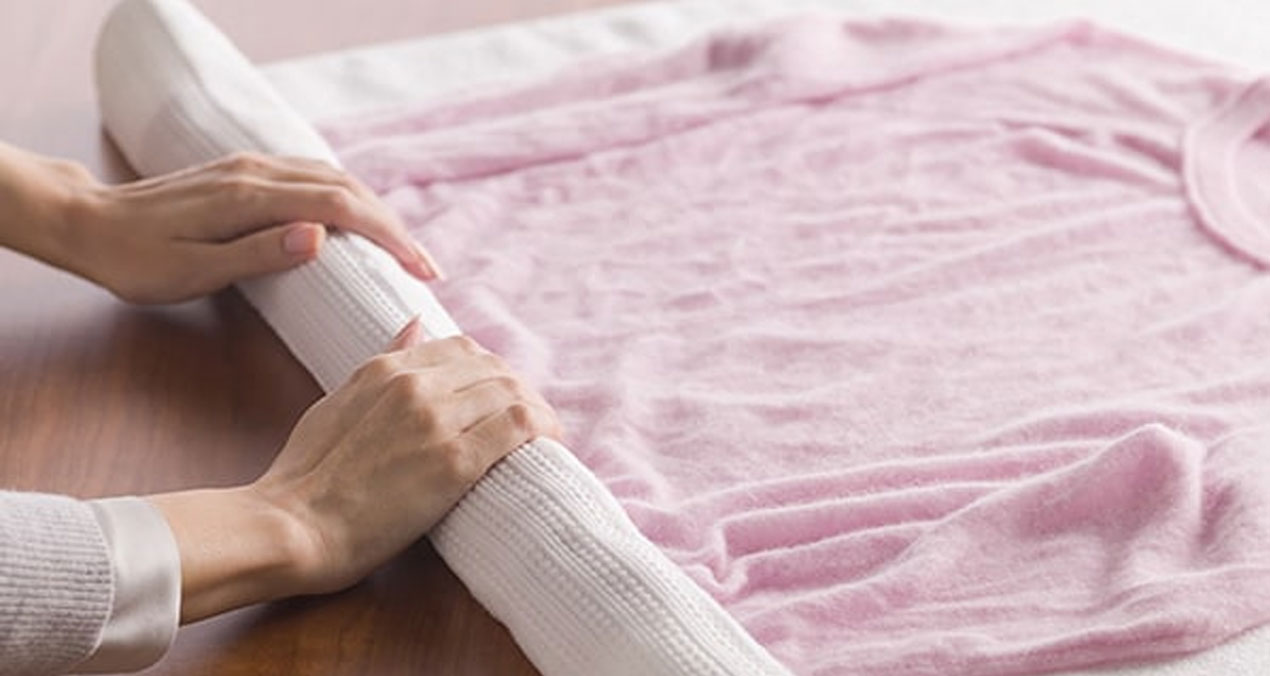
After washing, resist the temptation to expedite the drying process. Instead, lay the Cashmere flat on a clean, dry towel. Then, roll the towel and Cashmere together to absorb excess water. Unroll and reshape the garment, then allow it to air-dry on a flat surface. Hanging Cashmere during drying can lead to stretching and distortion.
Storage Recommendations
Proper storage is essential to prevent damage to Cashmere products. One needs to fold Cashmere items neatly and store them in a breathable garment bag or a clean cotton pillowcase. Avoid hanging, as this can result in misshaping over time. When transitioning Cashmere items from one season to another, ensure they are clean and completely dry before storing them to prevent mildew or mould growth.
Protection Against Moths
Cashmere is a natural fibre and hence susceptible to moths. To protect your investment, store Cashmere items with cedar balls or lavender sachets, both of which moths find unappealing. Regularly airing out your Cashmere and exposing it to sunlight, if possible, can also help deter moths, as they dislike fresh air and sunlight.
Minor Repairs
In the event of snags or small holes, one can repair Cashmere with care. Invest in a Cashmere comb to gently remove any pilling or snags. For small holes, one can use a needle and matching thread for discreet mending.
By adhering to these washing, drying, and storage guidelines, you can maintain the exquisite quality of Cashmere products. Understanding the science behind these practices ensures that the delicate fibers are treated with the utmost care, allowing you to enjoy the luxurious softness and warmth of Cashmere for years to come.
Also read: WHAT IS CASHMERE USED FOR?
Conclusion
The exploration of Cashmere reveals a fascinating interplay between tradition and science, showcasing the unique properties that make this fiber a timeless luxury. The scientific understanding of its fine fibers, derived from the undercoat of Himalayan goats, elucidates its exceptional softness, warmth, and lightweight insulation capabilities. Furthermore, its remarkable thermal regulation attributes make it ideal for autumnal and winter wear, seamlessly blending comfort with sophistication.
The sustainability of Cashmere production is underscored by traditional practices that prioritize the well-being of the goats and the ecosystem. The eco-friendly methods employed in harvesting and processing contribute to the allure of Cashmere as a sustainable and ethically sourced material.
Lastly, the maintenance and care tips elucidate the science behind preserving Cashmere's quality, emphasizing the delicate balance required to ensure longevity. By understanding and embracing the scientific intricacies of Cashmere, one can truly appreciate the artistry and craftsmanship that goes into creating this enduring symbol of luxury and style.